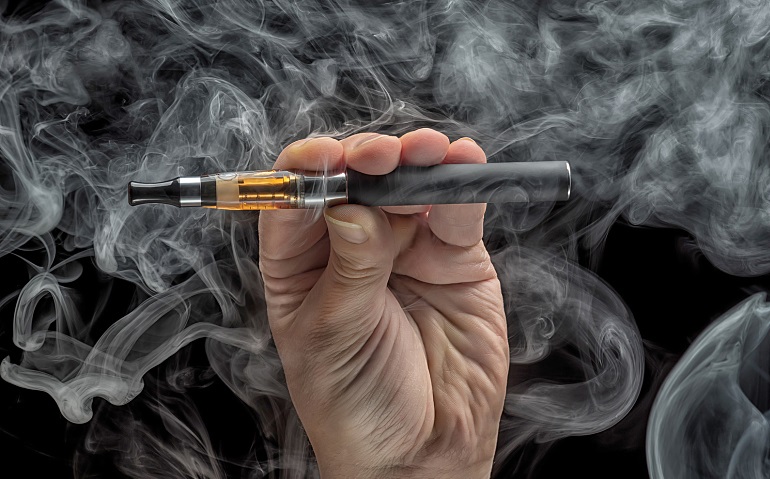
Vaping often receives negative media attention, with exaggerated risks and hypothetical dangers overshadowing occasional positive reports about its health benefits. Finding accurate information about vaping can be challenging.
A recent paper published in the American Journal of Public Health, co-authored by 15 former presidents of the Society for Research on Nicotine and Tobacco (SRNT), highlights that vaping’s potential positive impact on public health is being overlooked or distorted by influential interests and lobbying groups.
Even respected scientists and researchers in relevant fields are disregarded when their research contradicts the prevailing narrative that vaping is equally or even more harmful than smoking. This creates a confusing landscape for understanding the true facts about vaping.
This article aims to provide clarity and simplicity to the subject, offering a realistic assessment of the advantages and disadvantages of vaping. By exploring the real-world pros and cons, we can gain a better understanding of the topic.
Benefits of vaping
1.Reduced Harm
E-cigarettes are generally considered to be less harmful than traditional cigarettes because they do not involve combustion, which eliminates the production of tar and many harmful chemicals found in tobacco smoke. Switching to e-cigarettes can potentially reduce the risks associated with smoking-related diseases.
2.Fewer Chemicals
E-cigarettes contain fewer chemicals compared to traditional cigarettes. While they still contain nicotine, they lack the thousands of additional chemicals produced by combustion, making them a potentially safer option.
3.Control over Nicotine Intake
E-cigarettes provide users with the ability to control the nicotine content in their e-liquids. Vapers can choose from various nicotine strengths or opt for nicotine-free e-liquids, allowing them to gradually reduce their nicotine dependence over time.
4.Odor Reduction
Unlike the strong and persistent odor associated with traditional smoking, the vapor produced by e-cigarettes typically has a milder scent that dissipates quickly. This can be advantageous for individuals concerned about the smell clinging to clothes, hair, or the surrounding environment.
5.Flavor Variety
E-liquids come in a wide range of flavors, offering vapers a variety of options to suit their preferences. From fruity to dessert flavors, the availability of diverse flavors can enhance the vaping experience.
6.Convenience and Portability
E-cigarettes are portable and easy to use. They do not require matches or lighters and can be easily carried in a pocket or bag, providing users with a convenient way to satisfy their nicotine cravings on the go.
7.Social Acceptance
E-cigarettes are generally more socially accepted than traditional cigarettes. The reduced odor, absence of secondhand smoke, and fewer restrictions on vaping in public places make e-cigarettes a more acceptable option for vapers in social settings.
8.Cost Savings
While the initial cost of purchasing an e-cigarette device and e-liquids may vary, vaping can be more cost-effective in the long run compared to smoking traditional cigarettes. The cost of e-liquids is often lower than the ongoing purchase of traditional cigarettes, potentially resulting in savings for vapers.
9.Harm Reduction Tool
E-cigarettes have been used as a harm reduction tool by some individuals aiming to quit smoking. They can provide a transitional option, allowing smokers to gradually reduce their tobacco intake and potentially quit smoking altogether.
Cons of vaping
1.Overwhelming Choice
The vast array of options in the vaping market can be overwhelming for new vapers or those considering a switch from smoking. Unlike cigarettes, which offer limited brand choices, vaping presents millions of possibilities. To help newcomers, it’s best to direct them towards user-friendly products with simple instructions and provide access to reliable sources of further information such as vape shops, forums, and experienced vapers.
2.Steep Learning Curve
One of the main challenges for new vapers is purchasing a vaping device that requires specialized knowledge. This can lead to confusion, frustration, and potential regrets about switching to vaping. However, there’s no need for an extensive learning curve! Opting for simple starter products is usually the best approach for beginners.
3.Potential Health Risks
As vaping is a relatively new phenomenon, we are still uncovering potential risks associated with its use. However, if you are using vaping as a means to quit smoking, you can find solace in the fact that you have distanced yourself from the well-documented dangers of smoking. E-cigarette vapor either lacks the harmful substances present in cigarette smoke or contains them in minimal quantities. This makes vaping a safer option for vapers and bystanders exposed to “secondhand vapor.”
4.Smoking Stigma
The efforts to stigmatize smoking and smokers, known as smoking “denormalization,” have also extended to vapers. Despite using safer vaping products, vapers often face the same stigmatization due to misconceptions, fear, and intolerance surrounding smoking and vaping.
5.Perceived Youth Problem
The media coverage surrounding the “teen vaping epidemic” has created a perception that vaping is primarily a youth issue. This perception may discourage older smokers from considering vaping as a smoking cessation tool. While adults of all ages use e-cigarettes, the association with adolescent trends can make it challenging for newcomers to differentiate the harm reduction benefits from the youth-focused narrative.
6.Nicotine Misinformation
Nicotine, as a drug, is often misunderstood. It is a mild stimulant with effects similar to caffeine. However, due to its historical association with smoking, nicotine carries a negative reputation. People often confuse the effects of nicotine with those of smoking, including some healthcare professionals. In reality, nicotine itself does not cause cancer or heart disease and can offer health benefits for many users.
7.Restrictive Laws and Regulations
The vaping “epidemic” narrative has led to the implementation of laws and regulations that restrict vaping choices, availability, and affordability. Over half of U.S. states have imposed taxes on vaping products, and there have been bans on flavored vape products in certain jurisdictions.
8.FDA Regulations Threaten Vaping Choices
The Food and Drug Administration’s (FDA) Premarket Tobacco Application (PMTA) process poses a significant threat to the vaping industry. Manufacturers are required to submit complex applications to prove their products are suitable for public health. Experts believe that the PMTA process may result in the removal of many vaping products from the market, while cigarettes were exempted from this requirement.
9.Difficulty in Finding Truth
Vaping challenges both the tobacco industry and the powerful anti-smoking industry, making it difficult for smokers and new vapers to discern the truth about vaping. Misleading narratives are often advanced through various news outlets and even allied federal agencies, creating confusion and fear. With numerous alarming stories about vaping, it’s easy to be discouraged or scared away from exploring it as a viable alternative.
The choice is yours
By now, you should have gained a better understanding of the advantages and disadvantages of vaping. Both sides present valid points to consider. However, when comparing vaping to smoking, it becomes apparent that vaping is the better choice. While vaping may not be the sole solution to combat cigarette addiction, it’s important to recognize that alternative options also have their own pros and cons.
Vaping has proven to be successful because it provides nicotine and a smoking-like experience without the harmful combustion byproducts found in traditional smoking. However, it’s essential to acknowledge that vaping is not without its flaws, and it may not be the ideal solution for everyone. Regardless of your decision, it’s crucial to approach it with a clear understanding of the benefits and drawbacks associated with vaping.





